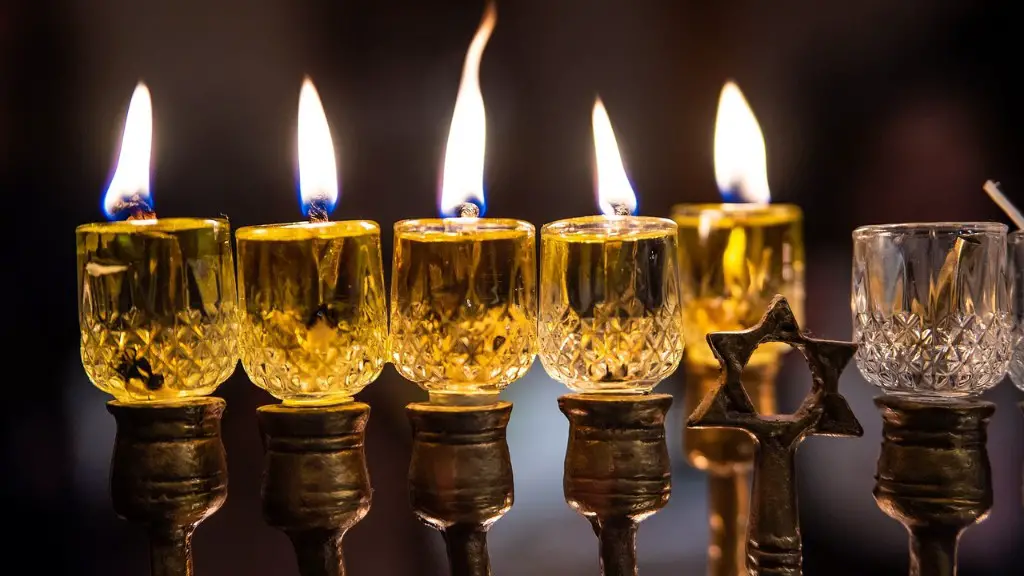What Are Key Beliefs Of Hinduism
Hinduism is an ancient religion and way of life that originated in India. It has been followed by major populations for many centuries, with multiple branches and variations in its beliefs, rituals, customs, and philosophical ideas. At the core, Hinduism is a pantheistic religion with a belief in the unity of all life and the physical universe. Devotees of Hinduism consider it the oldest known religion in the world and worship an array of deities in order to seek physical, mental, and spiritual harmony.
The Hindu scriptures set out three basic foundational principles of human existence. These are called Dharma, Artha and Kama, and they touch on personal ethics, economic endeavour, and individual pleasure, respectively. Dharma is concerned with the moral and ethical life, with right and wrong, and with the rules and duties of one’s life in order to maintain harmony. It is considered a means to develop one’s character, work on self-improvement, and to be of service to the world. Dharma is the central teaching of Hinduism and provides education on the kind of behavior that is looked upon favorably by the gods.
The second principle, Artha is related to the material realm and deals with the management of one’s resources and use of one’s talents. It speaks to the human desire for wealth and success, and provides a means to acquire and enjoy material wealth. Finally, Kama refers to the pursuit of physical pleasure, and looks at the importance of interpersonal relationships, love, and pleasure. The practice of these three core elements are believed to lead to an ultimately satisfying, purposeful life.
Hinduism also incorporates the concept of karma, which is the belief that the current circumstances of one’s life are a result of the energy and consciousness created by the individual’s past thoughts, words and deeds. All of a person’s achievements, both physically and spiritually, are said to be affected by one’s karma. The notion of karma is closely related to Hinduism’s cycle of rebirth (samsara), where the soul is in a constant cycle of death and rebirth until it achieves moksha – liberation from this cycle.
Hinduism also espouses the importance of non-violence (ahimsa). It is believed that non-violence is essential for spiritual growth and for the advancement of humankind. It is at the centre of Hinduism’s moral code and is thought to bring harmony in the physical and spiritual realms. Non-violence is taught to all followers of Hinduism, with some branches stressing it more than others.
Vedic Scriptures
At the core of Hindu beliefs is the desire to discover one’s true potential through spiritual practice and discovery. Hinduism recognises the inherent good in everyone, and the need to connect with that inner divine aspect in order to realise our greatest potential. This connection can be encouraged through knowledge, prayer, and study of the sacred Vedic scriptures.
The Vedas, or ancient writings, are a collection of ancient Indian texts which are believed to have existed since 1550BC. They contain both spiritual and philosophical teachings, as well as hymns and mantras which are used in prayer and meditation. The Vedas are all interconnected, and are believed to be the word of God (Brahma) and handed down by divine revelation over time. The Vedic scriptures provide guidance on the proper conduct of life, from relationships and business affairs to spiritual practices.
The Upanishads are another area of Vedic scriptures and constitute the philosophical foundations of Hinduism. They are a collection of ancient teachings that provide insights into the nature of the soul, personal spiritual development, and the relationship between the individual and the divine. There are also thousands of other Hindu texts, including the Ramayana and Mahabharata, which are respected and studied by Hindus.
Subscribe to save up to 70%
The Trimurti
In Hinduism, one of the most widely-adopted allegorical representations of the divine is the concept of the Trimurti, or three forms of God. This concept is based on the belief that the manifest, creative, and destructive aspects of the universe can be seen in three distinct but intertwined forms. These are Brahma, the creator; Vishnu, the preserver, and Shiva, the destroyer. Together, these three aspects represent the yin and yang of the spiritual plane and represent the interconnectedness of all life on the physical plane.
Hindus revere Brahma as the creator and source of life and respect Vishnu as the universal and supreme being who exhorts balance and harmony. Shiva embodies both the creative and destructive forces of the universe and is often seen as a representation of death. He is also seen as a deity of transformation and is venerated as a spiritual teacher and guide. Hindus also venerate numerous minor gods and goddesses including Ganesha, the god of beginnings, Lakshmi, the goddess of wealth, and Saraswati, the goddess of knowledge.
Hinduism also propounds the law of karma, which holds that one’s actions and thoughts determine the course of one’s life, and that the consequences of any deed or misdeed will eventually have to be faced. In this way, Hindus believe that one’s destiny is in one’s own hands, and that personal spiritual practice and adherence to the laws of karma are essential for achievement of one’s goals.
Sum of Three Worlds
A key principle in Hinduism is the belief that the physical universe is a temporary creation, formed from a combination of the three realms of existence. The three realms consist of the physical (Bhuloka), the spiritual (Antarlok) and the celestial (Swarg). It is believed that humans are a sum of these three worlds, and that there is no separate soul or spirit. This belief gives a unique perspective on physical and mental health, as devout followers of Hinduism sought to maintain health by entering a harmonious state with nature, seen as the source of divine power. This alignment with nature allows us to embrace the cycles of life and understand the impermanence of our physical forms and experience where necessary.
The importance of non-dualism or ‘Vedantic Monism’, is another significant principle of Hinduism. This belief states that the ultimate reality is non-dual, or one, and that the manifest universe is ultimately one with the divine. This belief is connected to the ‘Union with Brahman’, which is the ultimate goal of spiritual practice. The Upanishads, which are commentaries on the Vedas, are regarded as sacred Hindu texts and serve as important philosophical guideposts for those seeking spiritual knowledge.
Meditation
Meditation forms an important component of Hinduism. Through the practice of meditation such as contemplative meditation, prayer and mindfulness, adherents can seek to connect more deeply with the divine within and bring more balance and harmony to their lives. Meditation can also bring an enlightened perspective to daily life and practice, as followers strive to make decisions and act in accordance with the laws of karma. In this way, Hinduism encourages its followers to take responsibility for their own lives and to strive to reach their highest potential.
Mantra meditation is another form of meditation found in Hinduism, in which a devotee repeats certain meaningful words or syllables as a focus for concentration. This practice can be seen as a form of prayer and can be done either in the presence of a spiritual leader or in the privacy of one’s own home. Mantras are believed to invoke the divine power of the gods, and provide protection, guidance, healing and spiritual insight.
Rituals and Practices
Hinduism is also known for its rituals and ceremonies, which vary from region to region and from family to family. The core of these rituals are often the same and include offerings to the gods, such as flowers and incense, and recitation of sacred mantras. Hindus observe a range of festivals including Holi, Diwali, and Navaratri, which mark the victory of good over evil. Shiva, the destroyer, is often venerated at these celebrations, as are other deities.
Hindu practice also includes yoga, which is a spiritual practice to harmonize the mind and body. Hindus view yoga as the path to spiritual enlightenment and the liberation from suffering. Hindu devotees practicing yoga often seek the union of the body, mind and spirit in order to feel closer to the divine. The practice of yoga consists of various medical, physical and mental exercises, and is used as a tool to develop both inner and outer strength.
Jyotish
Hinduism also makes use of a form of astrology known as Jyotish, which is used to predict and understand events and patterns in a person’s life. Jyotish charts are used to determine the fate of an individual based on the positions of the sun and other planets at the time of birth. It is believed that through examining the Jyotish chart, one can gain insight into one’s life path, and learn more about personal strengths, weaknesses and destiny.
The study of Jyotish requires an in-depth understanding of Hindu scripture and philosophy, as it is believed that the positions of the planets when reviewed through the eyes of Jyotish determine one’s fate and past, present, and future destiny. Hindus based on their Jyotish charts seek to lead lives of virtue and holiness according to the many virtues found in Hinduism. This practice allows devotees to gain clarity and a better understanding of their lives and purpose.


